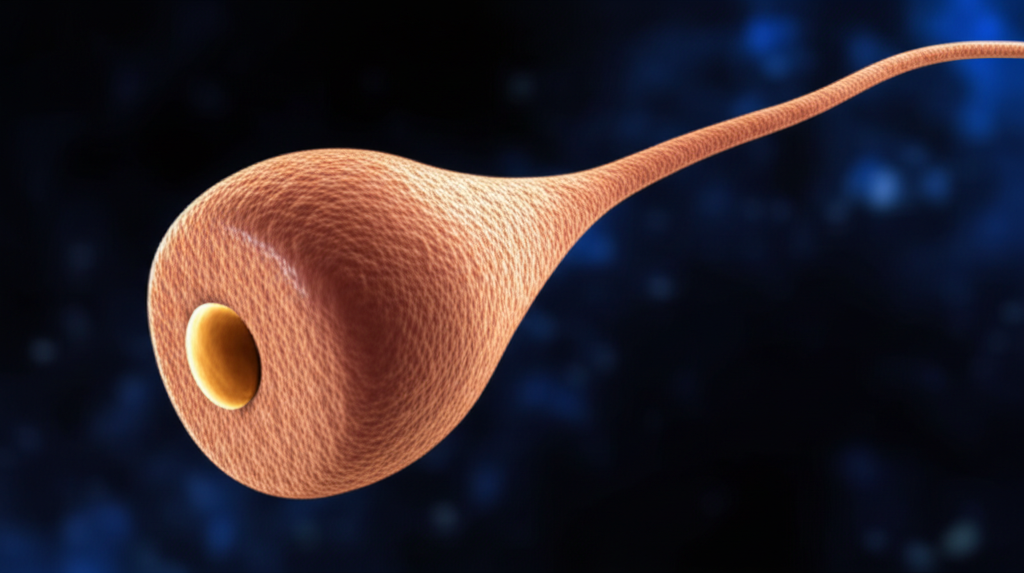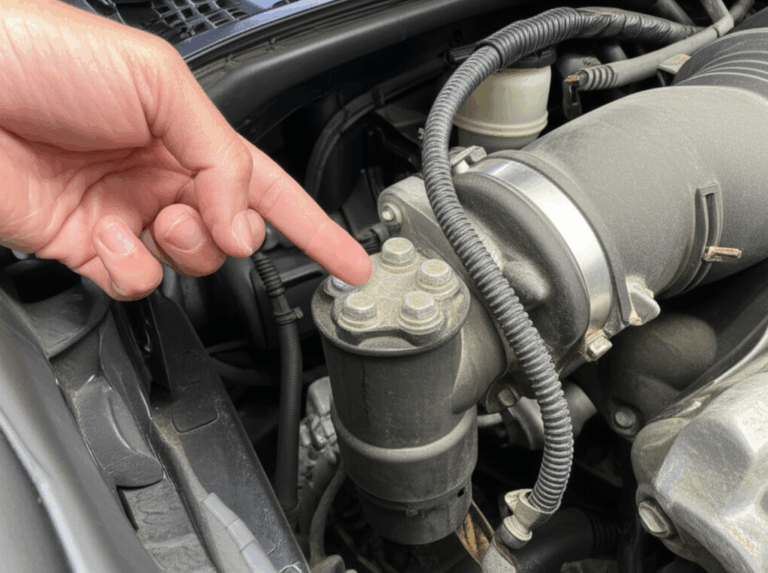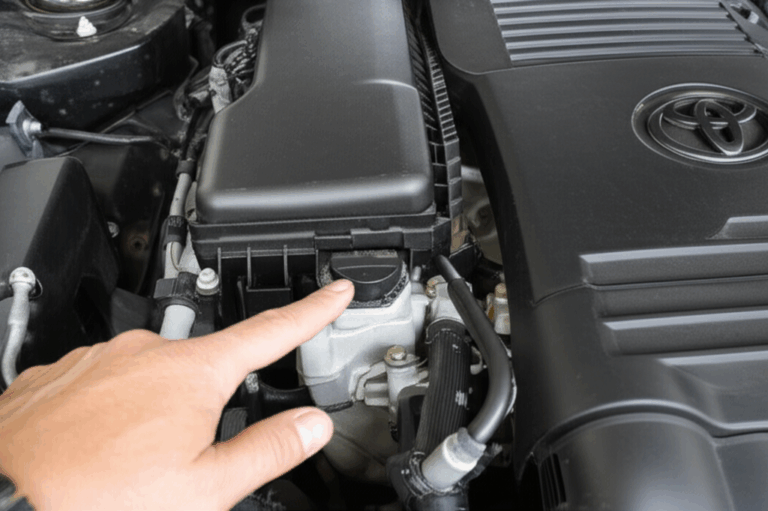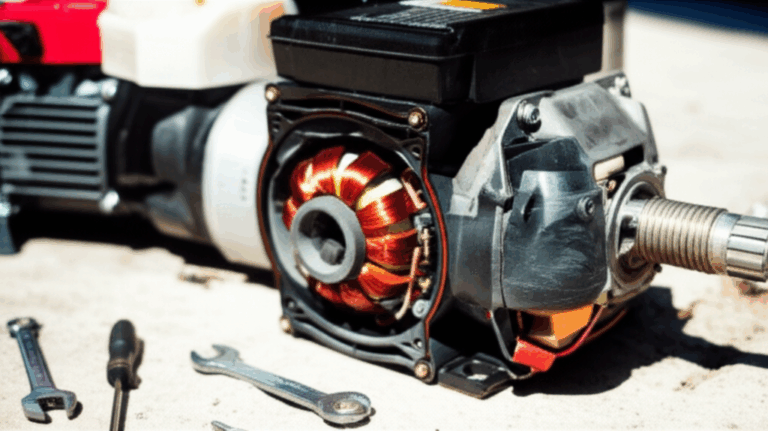
How Many Somatic Motor Neurons Stimulate One Muscle Fiber? The Essential Role of Motor Units in Muscle Control
Short answer you can use right now: one somatic motor neuron controls many muscle fibers, yet each single skeletal muscle fiber is controlled by only one somatic motor neuron. This one-to-many design gives you both fine control and strong power. Keep reading to see how your body pulls off this neat trick, and how this idea even guides smart motor design in industry.
Table of Contents
- The Simple Answer: How Many Neurons Per Muscle Fiber?
- What Is a Motor Unit, and Why Does It Matter?
- Precision vs Power: Why One-to-Many Innervation Works
- What Happens at the Neuromuscular Junction?
- How Does a Nerve Signal Make a Muscle Contract?
- How Do You Control Force? Motor Unit Recruitment and Firing Rate
- Which Muscle Fiber Types Do What?
- How Do Reflexes and Sensors Keep You Safe?
- What Can Go Wrong at the Neuromuscular Junction?
- From Biology to Motors: How Engineers Copy Nature
- Common Myths and Clear Takeaways
- Handy Tables: Ratios and Signal Steps
- References
- FAQ (Optional)
- Summary: Big Ideas to Remember
The Simple Answer: How Many Neurons Per Muscle Fiber?
Problem: People often mix up how nerves and muscles connect. You may wonder if more than one somatic motor neuron can stimulate a single muscle fiber.
Agitate: If you get this wrong you get stuck. You will not understand motor unit recruitment, muscle tone, or how you build strength and skill.
Solution: Here is the clear fact. In adult skeletal muscle each muscle fiber has one neuromuscular junction and it gets input from one somatic motor neuron. That neuron branches out and activates many fibers in its motor unit. So one neuron connects to many fibers, yet one fiber gets only one neuron.
I like to think of it like a school bell. One bell rings and many students hear it. Yet each student hears only one bell at that time.
Key point: this applies to skeletal muscle under the somatic nervous system. Cardiac and smooth muscle play by different rules.
What Is a Motor Unit, and Why Does It Matter?
A motor unit is simple to picture. It is one alpha motor neuron and all the skeletal muscle fibers it innervates. When the motor neuron fires an action potential, all the fibers in that motor unit contract. This follows the all-or-none principle at the unit level.
Think of a light switch that turns on a string of lights. When the switch flips, the whole string lights up. No half-on bulbs in that string. That is how a motor unit works when the neuron fires.
Motor units live in motor pools in the spinal cord ventral horn. Each alpha motor neuron has a soma, dendrites, an axon hillock, a myelinated axon with Schwann cells and Nodes of Ranvier, and an axon terminal that ends at the neuromuscular junction. This is the final common path from the central nervous system to the muscle.
Precision vs Power: Why One-to-Many Innervation Works
Problem: You want gentle touch, smooth handwriting, or a soft voice. You also want to jump, lift, and sprint. How can one system do both?
Agitate: If every neuron controlled too many fibers, your hand would feel clumsy. If every neuron controlled too few fibers, your legs would feel weak on stairs.
Solution: Your body uses different motor unit ratios. In fine motor control, each alpha motor neuron innervates only a few muscle fibers. In gross motor control, each neuron innervates many. This lets you blend precision and strength.
- In eye muscles one neuron may control about 10–20 fibers. That gives you fine motor control for tiny saccades and steady gaze.
- In big muscles like the quadriceps a motor unit can have 1,000–2,000 fibers. That gives you gross motor control and strong force for walking or running.
So your nervous system picks the right tool for the job. Small motor units for precision. Large motor units for power.
What Happens at the Neuromuscular Junction?
At the neuromuscular junction the axon terminal of the alpha motor neuron meets the motor end plate on the muscle fiber sarcolemma. A tiny synaptic cleft sits between them. This is a chemical synapse, not an electrical one.
When the action potential arrives, voltage-gated channels open in the presynaptic neuron membrane. Synaptic vesicles release acetylcholine (ACh) into the synaptic cleft. ACh binds to ligand-gated channels on the postsynaptic membrane at the motor end plate. This causes a local depolarization. If the end plate potential reaches threshold potential, the muscle fiber sarcolemma fires an action potential that spreads along the membrane and down the transverse T tubules.
Acetylcholinesterase in the cleft breaks down ACh quickly. This keeps signals fast and sharp. It also resets the synapse for the next impulse.
How Does a Nerve Signal Make a Muscle Contract?
This step is called excitation-contraction coupling. It links the electrical signal to the mechanical pull.
- The action potential travels along the sarcolemma and dives into T tubules.
- Voltage changes open channels in the sarcoplasmic reticulum.
- Calcium ions (Ca2+) flood the cytosol.
- Ca2+ binds to troponin. Troponin shifts tropomyosin off actin.
- Myosin heads bind to actin and start cross-bridge cycling.
- ATP powers the myosin heads as they pull. The sarcomere shortens between Z-discs. You see sliding of thin filaments past thick ones across the A-band and I-band. The H-zone and M-line tell you where the thick filaments sit.
When Ca2+ gets pumped back into the sarcoplasmic reticulum, the muscle relaxes. This is why ATP matters both for contraction and for relaxation.
How Do You Control Force? Motor Unit Recruitment and Firing Rate
Problem: You need to pick up a feather and then a full backpack. Same hand different force.
Agitate: If your brain fired all motor units at once, your hand would smash the feather or drop the bag.
Solution: Your nervous system grades force two ways.
- Motor unit recruitment. You add more motor units to increase force. You recruit them from smallest to largest. This is the size principle. Small units control slow-twitch fibers. Big units control fast-twitch fibers.
- Frequency of stimulation. You make active motor units fire faster. Low frequency yields a single muscle twitch. Faster firing gives temporal summation. At very high rates you reach incomplete tetanus then complete tetanus with smooth force.
Together these tools give smooth gradation of muscle force. You can stir soup or swing a bat with the same arm.
Which Muscle Fiber Types Do What?
Your muscles mix slow-twitch fibers and fast-twitch fibers. Slow-twitch fibers resist fatigue. They are great for posture and long walks. Fast-twitch fibers make bigger force fast. They shine in sprints and jumps.
- Slow-twitch fibers often sit in small motor units. They help postural muscles hold you upright. They keep muscle tone steady with low energy use.
- Fast-twitch fibers often sit in larger motor units. They bring rapid power for concentric and eccentric moves. They help with isometric holds too.
Training can change muscle performance. You can build muscle hypertrophy with load. Lack of use can cause muscle atrophy. Your nervous system adapts as well. It learns better motor unit recruitment for a sport task.
How Do Reflexes and Sensors Keep You Safe?
Your body uses proprioception to sense movement and position. Two key proprioceptors live in muscle and tendon.
- The muscle spindle lies in parallel with muscle fibers. It senses stretch. It helps with reflex arc actions like the knee jerk. Gamma motor neurons adjust spindle sensitivity.
- The Golgi tendon organ lies in series with muscle fibers. It senses tension. It helps you avoid too much force at the tendon.
These fast feedback loops run through the spinal cord and the brain. They link the central nervous system and the peripheral nervous system through efferent pathways and afferent inputs. They help antagonistic muscles and synergistic muscles work together with smooth timing.
What Can Go Wrong at the Neuromuscular Junction?
Problem: Sometimes the signal at the neuromuscular junction fails. That stops normal muscle activation and normal muscle contraction.
Agitate: Weakness can hurt basic tasks. It can change speech, grip, or walking. It can risk falls.
Solution: Know the common neuromuscular disorders and toxins so you seek help fast.
- Myasthenia gravis symptoms include fatigable weakness. It often hits the eyes first. It comes from antibodies against acetylcholine receptors.
- Lambert-Eaton syndrome blocks calcium entry at the presynaptic terminal. This lowers ACh release.
- Botulinum toxin (Botox) blocks ACh release. It causes flaccid paralysis. Doctors use tiny doses to treat dystonia and wrinkles.
- Curare blocks ACh receptors. It stops neuromuscular transmission.
- Nerve gas effects can block acetylcholinesterase. ACh builds up and causes dangerous tetany.
Clinicians test with electromyography (EMG). They also check nerve conduction, muscle tone, motor unit recruitment patterns, and reflexes. They look for signs of denervation and reinnervation. They assess for lower motor neuron lesion or upper motor neuron lesion signs. The pattern tells you where the problem lives in the motor system.
From Biology to Motors: How Engineers Copy Nature
Problem: In machines you need both smooth control and strong power. You need low noise and high efficiency. Bad cores waste energy. Bad design causes heat and poor torque.
Agitate: If your motor core is weak your system stutters. If your laminations are low grade you lose power as heat. You waste money and you hurt product life.
Solution: Engineers copy the motor unit idea with careful motor design. They split control into steps and they use high quality iron cores for clean magnetic flow. Better cores reduce eddy currents. That gives smooth torque like the neat control you get from motor unit recruitment in muscle.
If you design motors you know the heart of a motor sits in the core. High-grade electrical steel, tight stacks, and precision slots make a big difference. If you want to level up your design, explore these resources:
- Learn how a strong stator core lamination supports smooth magnetic paths.
- Explore full ranges of motor core laminations for different motor types.
- See options for a balanced rotor core lamination that pairs well with your stator.
- Compare materials and specs in electrical steel laminations.
I like this analogy. A well designed motor core is like a healthy motor unit pool. Each part does its small job. Together you get quiet strength and fine control.
Note: These links point to a trusted manufacturer of cores and laminations. Use them when you want consistent quality in your BLDC stator core, transformer lamination core, EI core, UI lamination core, CRGO lamination core, CRNGO lamination, or silicon steel laminations for your next project.
Common Myths and Clear Takeaways
- Myth: A single muscle fiber gets input from many somatic motor neurons. Truth: In healthy adult skeletal muscle a fiber gets one somatic motor neuron at one neuromuscular junction.
- Myth: The all-or-none principle means a whole muscle fires all at once. Truth: All-or-none applies to the action potential and to each motor unit. Whole muscle force changes as you add units and raise firing rates.
- Myth: Strength only comes from bigger muscles. Truth: Strength also comes from better motor unit recruitment and timing plus practice that reshapes your motor pool output.
Key takeaway: One neuron controls many fibers. One fiber gets one neuron. This simple plan powers complex moves.
Handy Tables: Ratios and Signal Steps
Typical Motor Unit Ratios and What They Do
| Muscle Group | Fibers per Alpha Motor Neuron | Control Type | What This Lets You Do |
|---|---|---|---|
| Extraocular (eyes) | 10–20 | Precision | Tiny gaze shifts and steady focus |
| Larynx (vocal cords) | 2–10 | Precision | Fine pitch and volume control |
| Fingertips | 10–50 | Precision | Tactile work and fine manipulation |
| Hand intrinsic | 100–200 | Intermediate | Grip with good dexterity |
| Forearm | 100–500 | Intermediate | Wrist and finger control |
| Biceps brachii | 100–700 | Intermediate | Lift daily loads |
| Quadriceps | 500–2,000 | Gross strength | Walk run climb with power |
| Gastrocnemius | 1,000–2,000+ | Gross strength | Jump push off and stand |
| Postural back | 1,000–3,000+ | Gross strength | Hold posture with low fatigue |
Values vary by person and training. The pattern stays the same.
Neuromuscular Junction: Signal Flow at a Glance
| Step | Location | Event |
|---|---|---|
| 1 | Axon terminal | Action potential arrives and opens voltage-gated channels |
| 2 | Synaptic cleft | ACh released from synaptic vesicles diffuses across |
| 3 | Motor end plate | ACh binds to receptors and opens ligand-gated channels |
| 4 | Sarcolemma | End plate depolarization triggers action potential |
| 5 | T tubules and SR | Ca2+ release starts contraction |
| 6 | Sarcomere | Cross-bridge cycling pulls actin past myosin |
References
- Hall JE, Guyton and Hall Textbook of Medical Physiology. Elsevier.
- Kandel ER et al., Principles of Neural Science. McGraw Hill.
- Purves D et al., Neuroscience. Sinauer.
- Bear MF et al., Neuroscience: Exploring the Brain. Wolters Kluwer.
- Sherrington CS, classic studies on the final common pathway and motor unit organization.
These sources cover motor units, neuromuscular transmission, excitation-contraction coupling, and control of movement.
FAQ (Optional)
Q: Does one somatic motor neuron ever share a fiber with another in adults?
A: In healthy adult skeletal muscle no. Each fiber has one neuromuscular junction from one alpha motor neuron.
Q: Can one neuron control different fiber types?
A: A motor unit usually contains fibers of the same type. Training and reinnervation can shift properties over time.
Q: What is the role of gamma motor neurons?
A: Gamma motor neurons set the sensitivity of the muscle spindle. They help keep proprioception accurate during movement.
Read This If You Like Details: The Journey From Brain to Muscle
Follow the signal. The brain plans voluntary muscle movement. The command runs down the central nervous system through descending tracts to the spinal cord ventral horn. The alpha motor neuron in the motor pool sums inputs on its dendrites and at the axon hillock. If the resting membrane potential reaches threshold potential it fires an action potential. The myelinated axon carries it fast with saltatory conduction at the Nodes of Ranvier due to Schwann cells. The propagated potential reaches the axon terminal. Neurotransmitter release begins. This is neuromuscular transmission at a classic chemical synapse.
The muscle fiber sarcolemma receives it at the motor end plate. Voltage-gated channels and ligand-gated channels shape the depolarization, repolarization, and hyperpolarization of the excitable cell membrane. The T tubules and sarcoplasmic reticulum pass the message inside. Calcium ions bind troponin. Tropomyosin moves. Actin and myosin lock in. Cross-bridge cycling uses ATP. The sarcomere shortens between Z-discs across the A-band and I-band while the H-zone and M-line mark thick filament features. This is muscle physiology in action.
Then your nervous system grades force by motor unit recruitment and by changing firing rate. It blends signals for isometric contraction and isotonic contraction. It switches between concentric contraction and eccentric contraction without missing a beat. Antagonistic muscles and synergistic muscles balance torque across a joint. The somatic nervous system and the peripheral nervous system keep the efferent pathway clear. Proprioceptors like the muscle spindle and the Golgi tendon organ shape reflex arcs that stabilize your moves.
When you practice, your motor unit recruitment gets sharper. You avoid muscle fatigue longer. You build muscle hypertrophy with training. Too little use can cause muscle atrophy. EMG can track motor unit activity in clinical work and in sport science.
If disease strikes, clinicians look for signs of neuromuscular disorders. They test for myasthenia gravis. They consider Lambert-Eaton syndrome. They ask about botulinum toxin exposure. They consider curare or nerve gas effects. They evaluate for denervation and reinnervation. They look for lower motor neuron lesion or upper motor neuron lesion signs. They check muscle tone and motor unit recruitment patterns. They map the problem to the brain, spinal cord, or peripheral nerve.
Neurophysiology links every step to the bigger picture. It explains how the CNS controls the PNS. It shows why motor units and motor pools matter in both fine motor control and gross motor control. It shows why postural muscles hold you up and how fast-twitch fibers and slow-twitch fibers split the work. It shows how the all-or-none principle applies at the level of the action potential and the motor unit yet not to the whole muscle. It shows how summation and tetanus shape smooth force. It shows why your body is a master at gradation of muscle force and at muscle activation timing.
PAS in Real Life: Learning a New Skill
Problem: You try to play piano. Your fingers feel stiff. Notes sound uneven.
Agitate: You get tense. You press too hard. You tire fast. Your muscle twitch feels jerky. You wonder if you will ever get it.
Solution: Practice builds better motor unit recruitment. The smallest motor units fire first with low force. You add units only as needed. You tune frequency of stimulation for smooth tone. Over time your nervous system finds the right pattern. You use less effort for more control.
The same holds for sport, speech, and writing. The system is the same. The settings change.
Summary: Big Ideas to Remember
- One somatic motor neuron can innervate many skeletal muscle fibers. One muscle fiber gets input from only one somatic motor neuron.
- A motor unit equals one alpha motor neuron plus all the fibers it innervates. When it fires all its fibers contract.
- Small motor units give fine motor control in eyes, fingertips, and larynx. Large motor units give gross motor control in quadriceps, calf, and postural muscles.
- The neuromuscular junction uses acetylcholine at a chemical synapse. ACh binds receptors on the motor end plate. Acetylcholinesterase clears ACh fast.
- Excitation-contraction coupling uses T tubules, sarcoplasmic reticulum, and Ca2+ to start cross-bridge cycling between actin and myosin.
- Force grading comes from motor unit recruitment and frequency of stimulation. This drives summation and tetanus when needed.
- Proprioceptors like the muscle spindle and Golgi tendon organ guide reflex arcs and muscle tone with help from gamma motor neurons.
- EMG can study motor units. Diseases like myasthenia gravis, Lambert-Eaton syndrome, and toxin effects can block neuromuscular transmission.
- In design, clean magnetic cores help motors act smooth like good motor unit control. Quality laminations support stable torque and low loss.
- Keep practicing. Your nervous system learns better control. That is how you move from clumsy to skillful.
Bold concepts you met today: motor unit, neuromuscular junction, muscle activation, action potential, all-or-none principle, alpha motor neuron, motor end plate, synaptic cleft, ligand-gated channels, voltage-gated channels, depolarization, repolarization, hyperpolarization, resting membrane potential, threshold potential, propagated potential, myelinated axon, Schwann cells, Nodes of Ranvier, saltatory conduction, T tubules, sarcoplasmic reticulum, calcium ions, troponin, tropomyosin, actin, myosin, cross-bridge cycling, ATP, spinal cord ventral horn, CNS, PNS, somatic nervous system, efferent pathway, proprioception, muscle spindle, Golgi tendon organ, reflex arc, motor pool, dendrites, soma, axon hillock, myofibril, sarcomere structure, Z-discs, M-line, H-zone, A-band, I-band, muscle fatigue, muscle atrophy, muscle hypertrophy, EMG, neuromuscular disorders, myasthenia gravis symptoms, Lambert-Eaton syndrome, botulinum toxin mechanism, curare, nerve gas effects, denervation, reinnervation, lower motor neuron lesion, upper motor neuron lesion, muscle tone, postural muscles, fast-twitch fibers, slow-twitch fibers, isometric contraction, isotonic contraction, concentric contraction, eccentric contraction, excitable cell, electrical signaling, chemical synapse, synaptic vesicle, fine motor control, gross motor control, motor unit recruitment, gradation of muscle force, muscle twitch, summation, tetanus, voluntary muscle movement, antagonistic muscles, synergistic muscles, neurophysiology, skeletal muscle fiber, muscle physiology, Brain, Spinal Cord, Efferent Neurons, Neurotransmitter, Synapse, Skeletal Muscle, Acetylcholine, Acetylcholine Receptors, Acetylcholinesterase.
These terms tell one story. One neuron. One fiber. Many fibers per neuron. Smart control for every move you make.








